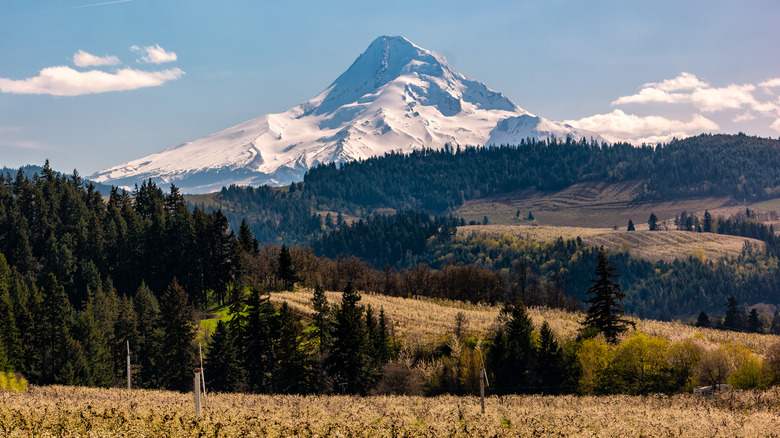Follow In Pioneer Footsteps And Witness Oregon Scenery On This Historic Western Road Trip
When it comes to scenic spots, Oregon has more than its fair share. If you love the ocean, you can see craggy cliffs and sandy beaches as you make your way to the charming beach city of Brookings on Oregon's southern coast. Alternatively, if you're more into desert vistas or dunes, there is a long list of underrated destinations in Oregon, like the Painted Hills, Alvord Desert, and Oregon Dunes National Recreation Area. Yes, Oregon has some quirky towns and cities, but the Beaver State is a place where, more than anything, nature shines. And there are an abundance of options all around if you know where to look.
One of the most impressive sights in Oregon is Mount Hood. This snow-capped peak dominates the horizon, offering incredible landscapes for hiking and skiing. If you're a history buff, you can step back in time and experience Mount Hood like a traveler on the Oregon Trail. Best of all, you don't have to sleep in the back of a covered wagon, and you won't contract dysentery. For a true adventure, check out one of the best historic sites in the state: Barlow Road.
The history of Barlow Road
To understand the meaning of Barlow Road, you have to put yourself in the shoes of a settler heading west on the Oregon Trail. Many travelers came to Oregon from Missouri, spending weeks on wagon trains fighting disease, starvation, and boredom. Then, once they finally made it to Oregon, there was a mountain in their way.
In 1845, The Dalles — the south bank of the Columbia River – was effectively the stopping point for the Oregon Trail. Because there was no feasible road around Mount Hood, settlers had to float themselves and their belongings down the Columbia River on ferries to make it to Oregon City, their destination. This option was dangerous and expensive. Dozens of wagon trains had to sit and wait for their opportunity to continue on.
Enter Sam Barlow. Frustrated by the sea of wagon trains clustered on The Dalles, Barlow and his seven-wagon train set off to find an alternate route by land. Joined by other determined settlers, Barlow and company managed to forge a path around the mountain through the wilderness. Their journey took three months. Once Barlow reached Oregon City, he partnered with a local businessman named Philip Foster to build a toll road. It was formally established in 1846. Once this much safer and more affordable route was available, Oregon was flooded with eager settlers.
What to do when visiting Barlow Road and Mount Hood
These days, there are numerous other ways to get around Mount Hood, and most of them take a matter of hours, not days or months. However, you can drive along Barlow Road and experience some of the stops that pioneers used along the way. There's the Pioneer Woman's Grave Trailhead, Summit Meadow (which served as a stopping point for weary travelers), and Still Creek Campground.
The road, which is now known as Highway 26, winds down the mountain, passing the towns of Welches and Sandy. Sandy is a quiet, small town known for having some awesome breakfast restaurants, including the Tollgate Restaurant and Saloon, which was named after the toll gates along the original road. But if you want to keep following the old route, you'll need to break off and head west toward Eagle Creek, home of Philip Foster, and Oregon City.
While it's fun to experience history first-hand, driving along Barlow Road is not the only thing you can do around Mount Hood. If you're more of a modern wine and food connoisseur, you'll want to take the Hood River Fruit Loop, Oregon's breathtaking riverside drive. If you visit in spring or summer, you can indulge in fresh fruit, locally made wine, and other delicious treats.


